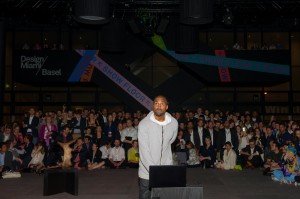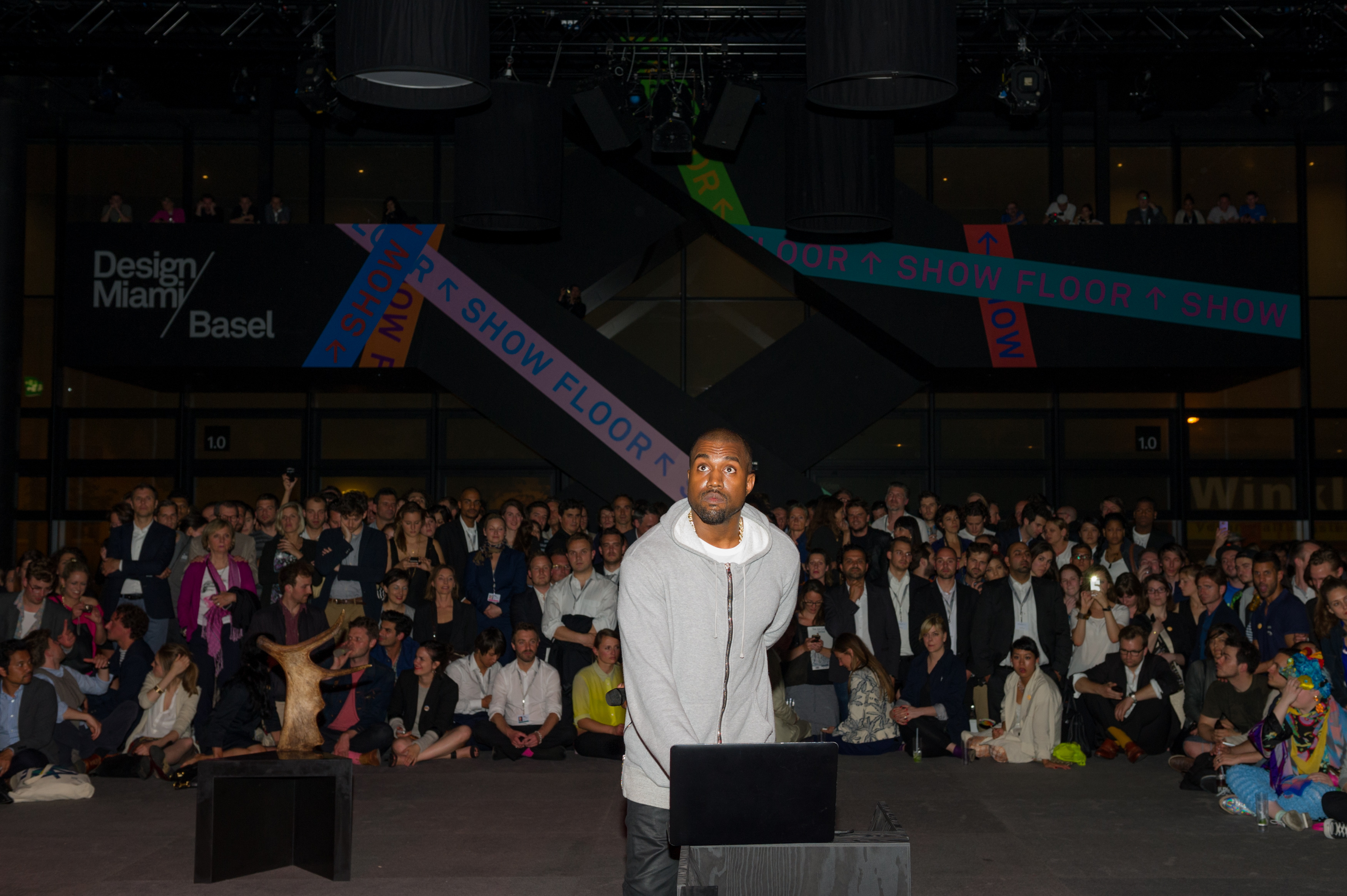 What’s the hottest thing in the art world today? Forget the artists and the famous dealers. Today, it’s the celebrities.
What’s the hottest thing in the art world today? Forget the artists and the famous dealers. Today, it’s the celebrities.
The art world has officially joined the rest of the world in a maniacal obsession with celebrity culture. Sure, Warhol did it long ago with his 1960s “screen tests” of Warren Beatty and Dylan, and by hosting the likes of Mick Jagger, Jackie O, her son John John and sister Lee Radziwill in Montauk in the ’70s, then hanging with Halston and Liza Minelli throughout the ’80s. But these days, celebrities and art are hooking up in a whole new way.
In June, Kanye West showed up at Design Miami Basel, the annual fair in Basel, Switzerland, taking the stage as a crowd that largely summers in the Hamptons cheered him on. He shouted, “Fuck you and your Hampton house/I’ll fuck your Hamptons spouse,” as they screamed with delight.
Last month, Jay Z filmed a music video for a song titled “Picasso Baby.” His adviser, the lovely Jeanne Greenberg Rohatyn, invited some art world luminaries to sit and watch Hova perform the rap for six long hours. Those who showed up to the filming were in for some awkward fun, like when he sang, “I want Condos in my condo,” to artist George Condo.
But that was just an appetizer. He went on with lines like “It ain’t hard to tell/but I’m the new Jean-Michel [Basquiat].” Or how about: “Oh, what a feelin’/Ah, fuck it/I want a trillion.” He finished off with “What’s it gonna take for me to go/For y’all to see/I’m the modern-day Pablo Picasso baby!” On the expertly produced behind-the-scenes video, one can see artists like Marina Abramović acting like they were having fun, and, after all, what’s the matter with having a good time? Nothing really, other than the fact that the song was plain awful.
In fact, ”Picasso Baby” may well be the perfect theme song for today’s art world. Jay Z’s video, which aired on HBO, was dubbed “performance art,” something that has also been the province of the hunky James Franco. The actor has been ubiquitous on the art scene, first appearing at all the shows, then hanging out with curators like Klaus Biesenbach and Jeffrey Deitch. Next, he decided to make his own art. Heck, he has even had a show at Javier Peres’s Berlin gallery, as well as Gagosian Beverly Hills (with Gus Van Sant). His work was also on view at the respectable Pace London, believe it or not (in a collaboration with artist Douglas Gordon). Just a week ago, he announced he will be hosting a new series on Ovation featuring his thoughts on works of art. This show is destined to topple Bravo’s Work of Art, the American Idol-style TV show that ran for two seasons and up until now held the prize for art’s goofiest pop show.
Of course, not all of the art world’s favored celebrities purport to make art themselves. Two years ago, before the doping controversy, Alex Rodriguez opened his Miami home during Art Basel to showcase his “private collection,” including Nate Lowmans and George Condos, several of which were in fact on loan. The party was happening, Miami was hot, but the star of it all was A-Rod himself, and he looked the part: tall, charismatic, bright hazel-eyed, with a batting cage in his living room. What more could you ask for? Turned out it wasn’t just the art that was perhaps for sale; the entire house was on the market. It sold this past spring for a fat $30 million.
Fashion designers like Tom Ford and Marc Jacobs are in on the game, and from time to time Steve Martin or John McEnroe will buy or sell something, but those guys are collectors; they have never hosted an event like Bono’s (Red) auction back in February 2008. It was directed by the masterful Damien Hirst and brought in more than $42 million. At the time, no one seemed to be concerned that the “Red” concept was already being criticized as a thinly veiled marketing scheme, while doubts were hovering in the press about how much of the money actually made it back to help AIDS in Africa. This was followed up in 2011 by Ben Stiller’s “Artists for Haiti” auction at Christie’s produced by gallerist David Zwirner with the help of Mr. Zwirner’s artist roster: This one raised almost $14 million. The money was gifted by Mr. Stiller to Haitian charities of his choice, and the grantee list is now published on his website.
Last May, Leonardo DiCaprio’s “ 11th Hour” auction took it all to a new level. The event was hosted by Christie’s and produced by its swashbuckling SVP Loic Gouzer (the sale’s title was a loaded metaphor for it not being too late to save the environment). The 30-some lots, which added up to a high estimate of only $15 million, ended up selling in a room filled with oligarchs and socialites for almost $40 million, with some lots tripling their value in the “real” art market. Were the bidders so desperate to give their money to Mr. DiCaprio’s favorite charities? The nonprofit recipients hadn’t even been chosen, but the glow of Leo’s star power burned bright.
Tom Kaplan, the gold investor and a lover of wildcats was an übermensch. He offered a matching gift of $5 million on the two tiger-themed paintings, which were only worth about $2 million. They improbably sold for all of $5 million and then some, meaning his gift was due in full, and the tally was now boosted to $45 million, beating Bono and Mr. Hirst’s record. Few have written about what a huge success it was and why a Sterling Ruby “ghetto Rothko” painting made triple what it was worth a few months before or why a $2 million Marc Grotjahn painting made six. How about that beautiful Raymond Pettibon surfer painting that blew through his previous record (at the Ben Stiller charity auction) at $2 million, while a brand-new Robert Longo sold for four times his previous auction record? Certainly, open access to desirable and fashionable works of art is part of it, since these bidders didn’t have to deal with waiting lists or owe favors to the artist’s dealers. Who’s complaining? The money all went to legitimate environmental causes, and so all of the hoopla and schmoozahol did a lot of good. Still, I can’t help but wonder what these same works would have sold for without the Leo sparklers.
Celebrities and celebrity art—that’s the recipe for today’s big prices. And anyone in an auction house or a big gallery knows it. Whether it’s Owen Wilson or Tobey Maguire, a celebrity sighting is de rigueur at a big opening, while movie stars in the auction room keep everyone rubbernecking with bidding hands pumping. Is it all B.S.? Is it all absurd? Sure, but the number of people who really love standing in front of a painting is minuscule. Today’s art buyers are players—art is a way to be, buy and look smart.
Sprinkle on that celebrity pixie dust, and you have the perfect recipe for big prices at auction. Take well-known Basquiat painting Dustheads that sold last May at Christie’s for almost $50 million. It had been guaranteed at half that price—the standing world record for the artist, which many in the peanut gallery thought was excessive. But two nights after the Leo sale, the celebrity glitter still twinkled in the room. The painting, which had been heavily crosspromoted in catalogs and videos, comfortably doubled the guarantee. How could that be? Dustheads had itself become a celebrity—the kind of trophy anyone from Doha to Moscow to Hong Kong would instantly recognize as a star picture. Foolishly, many people now think every Basquiat is worth double. But top pictures are very rare, and, more importantly, in the case of Dustheads, celebrity art doesn’t obey the rules of the marketplace. Celebrity artworks are like celebrities themselves—they do as they please, while people “ooh” and “aah” and pay to shake their hands.
Celebrity sells cars and Scotch whiskey, so why shouldn’t it sell art too? It even earned Bob Dylan two shows at Gagosian Gallery, and, though Bob’s music is historic, his paintings are some of the worst in history. Big business knows that we need pop stars, movie stars and supermodels to fuel the machine and make the art world feel like it’s crossing over into the real world. Yes, it feels strange, because it’s completely disconnected from what art is about. But let’s not get our panties in a twist, because, if you can’t beat ’em, join ’em.
Say we took a slightly obscure but worthy charity, one that captures the imagination by saving a species on the verge of extinction. How about saving the beloved Mexican walking fish? Next, we convince some name artists and trendy hotshots to make work for the walking fish, because it is disappearing and because their artwork will set a new auction record (not to mention we’ll kick them back half the hammer price under the table). Now we can invite Mr. West and Jay Z to rap and riff and insult the audience while James Franco, dressed in white tie, auctions off the lots. We’ll get several movie stars wearing baseball caps (they like to be recognizably incognito) to sit in a crowd of oligarchs wearing black T-shirts and hedge fund tycoons in tight-fitting Prada tracksuits (they’re in great shape), with scantily clad female models generously sprinkled throughout. We’ll convince Sotheby’s auction house to do it all for free, because it’s great publicity and they’ve got two big new activist shareholders pushing for some fireworks. Now here’s the key: We get the whole thing televised on a big cable network, because art is hot and the world wants in on the celebrity-encrusted spectacle. It will all look so glamorous, and the enthusiastic bidders will appear beneficent as they bid up the key charity lots. Wow! The higher it goes, the better everyone will feel. Hey, I’ll bet we could even sell an old urinal for a million bucks.
